16 Types of Bathtubs to Help You Relax & Bathe in Peace
Author: Omar Alonso | Editor: Omar Alonso
Review & Research: Jen Worst & Chris Miller
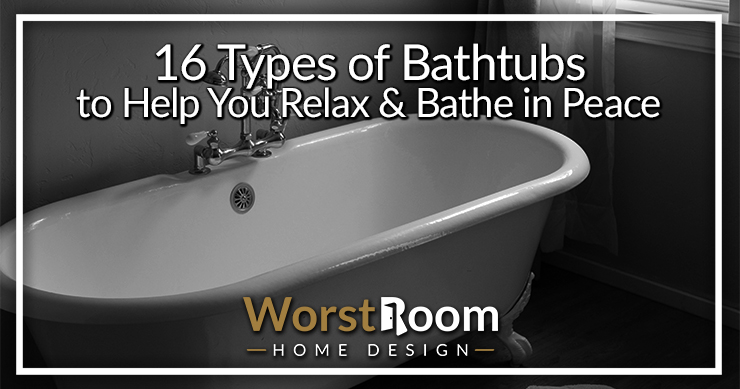
Being able to take a hot bath after a long, tiring day can really help calm those nerves. The perfect types of bathtubs are especially helpful if you have kids or pets, as giving them a bath can be quite a tedious task.
Bathtubs come in a variety of materials and designs. If you’re looking to get a bathtub for your bathroom, this article will take you through the various types of headboards available, so you can choose the one that works best for you.
Types of Bathtubs Based on Materials
Bathtubs are manufactured in a number of materials. Based on your family and the frequency of usage, choose the one that fits well for your house, but also don't write off what types of showers you'll have installed as well.
Cast Iron Tub
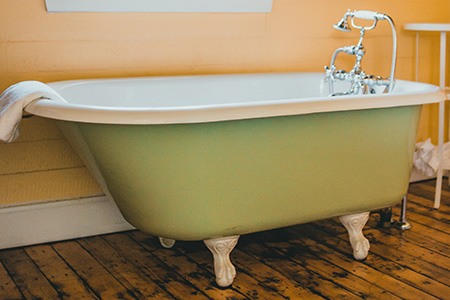
A cast iron tub is a classic tub that has been around for centuries. The modern-day cast iron tubs are usually coated with a thin coat of porcelain enamel, which gives them a smooth, shiny surface.
Cast iron tubs are really heavy and get even heavier when filled with water. So, these need to be supported with strong, structurally strong floorings. They're also more expensive and more difficult to install due to the weight.
With the solid iron build, cast iron tubs are pretty much indestructible. They’re also very easy to clean, as you can just wipe it down with a wet sponge and rinse with water. Being so low maintenance, cast iron bathtub styles are ideal for families with young children.
Porcelain / Enamel Tub
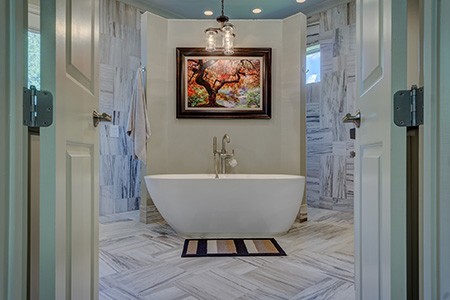
Porcelain or enamel tubs are mostly made of steel and then coated with multiple layers of enamel or porcelain.
As steel is a much cheaper material, these tubs cost a lot less than cast iron tubs. These bathtub types are also easy to maintain and clean.
The glossy finish of the enamel or porcelain can be easily restored by proper cleaning and drying after each use. But the layers of enamel may chip over a period of time.
This can expose the steel underneath, which could lead to rust. While this may seem like a setback, enamel tubs are relatively cheap and can easily be replaced. Of the different types of tubs, these are advantageous for this reason.
Acrylic Tub
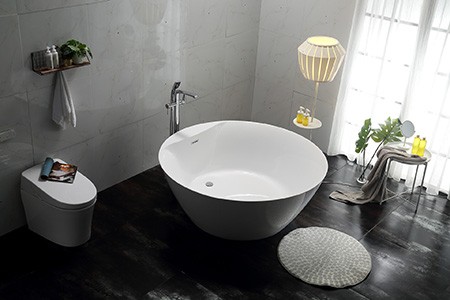
Acrylic is a glossy material with a smooth finish. It is highly durable, making it a great contender as a material for long-lasting bathtubs.
The surface may show visible scratches and marks with constant use, but these types of baths can easily be repaired.
Acrylic tubs come in all shapes and sizes and can look great in any space. Most hot tub, walk-in tub and spa tub manufacturers use acrylic extensively due to its versatility, especially in modern types of hot tubs.
Fiberglass Tub
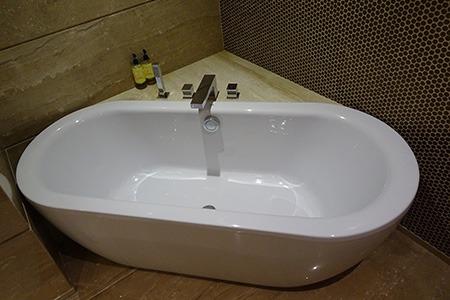
Like acrylic, the different types of fiberglass are strong and versatile materials. Fiberglass tubs are coated with a layer of gel coat to add shine and a layer of reinforced polyester material to increase the strength of the tub.
If maintained well, fiberglass types of bathtubs can retain their color and shine for several years. On the other hand, if they are not properly maintained, the gel coat may let water seep through and leave stains on the tub.
Wood Tub
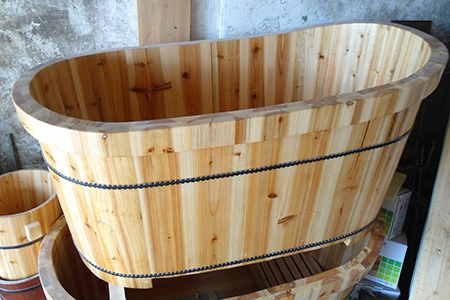
As a material extensively used in furniture as well, wood has been around for ages. Wood tubs specifically have been around for several centuries, mostly in the Far East.
These are usually made with strips of wood seamlessly molded into round, oval or oblong shapes. As with all wood, wooden tubs are also prone to seasonal warping and shrinking.
To prevent this, it is necessary to keep a few inches of water in the tub at all times. The material requires high maintenance but can keep your water warm for longer than most other tubs.
Composite Tub
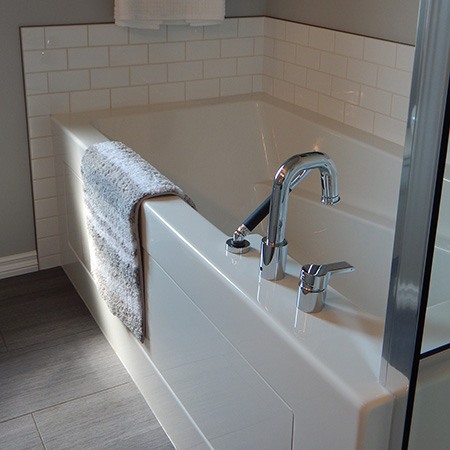
Composite tubs are made of two or more materials, like plastic, resin and carbon fiber. The combination of these materials creates a lightweight, yet strong tub. The nice thing is when you develop problems you can solve it with plastic bathtub crack repair fairly easily.
These are especially useful for apartments in high-rise buildings, where the flooring may not be strong enough to hold heavier tubs.
Composite bathtub types are usually coated with a layer of enamel to give a smooth, glossy finish. Like other tubs, this too has to be maintained well and cleaned regularly to avoid chipping.
Cultured Solid-Surface Tub
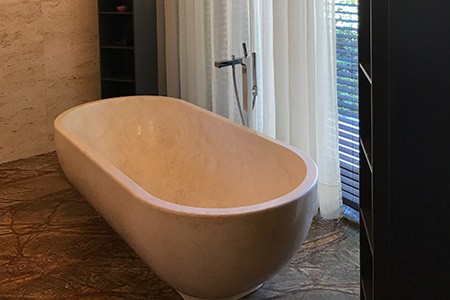
Cultured solid-surface types of tubs are made with a mixture of rocks. Chunks of various stones are crushed together and then mixed with liquid polyester resin.
The mixture is then molded into bathtubs, which are then coated with a gel coat for additional smoothness.
This composite material has high strength and durability and requires very little maintenance. Unlike most other tubs, a cultured solid-surface tub is resistant to mildew and mold, making it beneficial for people with allergies.
Glass Tub
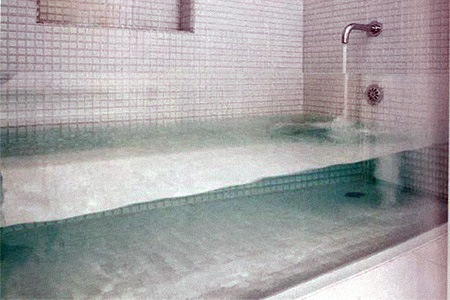
Glass tubs are the latest trend in bathtubs. These lend a sophisticated look to an otherwise simple bathroom. These bathtub alternatives are almost like a swimming pool if designed like the one pictured above.
While these might be visually appealing, glass types of baths are probably not for everyone. They require a high level of maintenance and care with each use.
Types of Bathtubs Based on Designs
Here are some of the more common designs that bathtubs are available in.
Generic / Alcove Bathtub
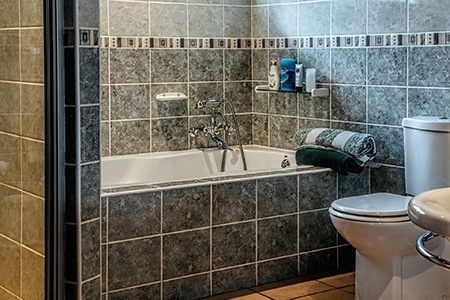
This one is a standard tub that is practical for the whole family. The simple design is convenient to bathe kids and pets too. It is usually installed at one end of the bathroom, surrounded by three walls.
Most of these standard tubs often have a shower head at the top too, to function as a standing shower as well. You can use shower tiles or shower tile alternatives to seal the walls surrounding the tub.
Corner Tub
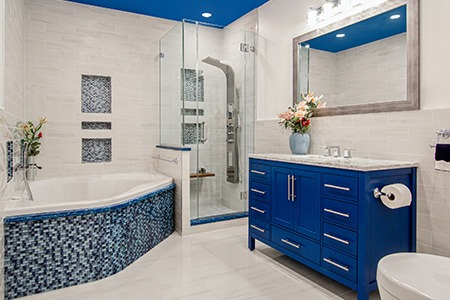
Similar to alcove tubs, corner tubs are also installed against walls. But to make the most of the bathroom space, only 1-2 sides of the tub go against a wall.
The remaining sides are shaped to work well with the available space. Hence, corner tubs might have a rounded outer edge too, which are visually quite appealing.
Freestanding Bathtub
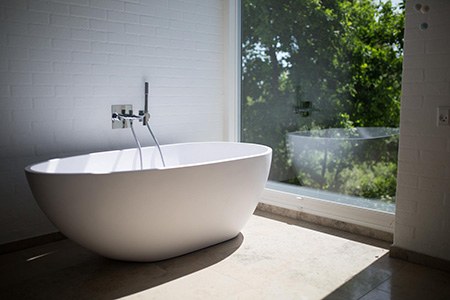
Unlike standard bathtub types, a freestanding one can be installed very easily by placing it anywhere in the bathroom.
Freestanding bathtubs come in a variety of sizes and shapes, which can add a striking impact to the overall look of the bathroom. A bathtub of this style will often hold more gallons than others.
Soaking Bathtub
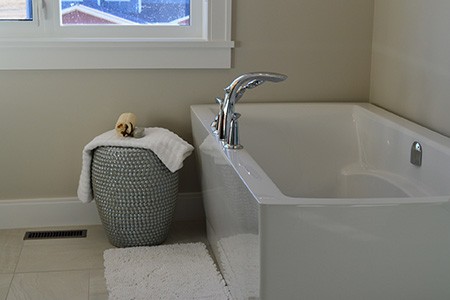
A soaking bathtub is much larger and deeper than a standard bathtub, hence holding more water.
These are designed to immerse the entire body into water, for a more relaxing and luxurious experience.
Soaking bathtubs are usually freestanding tubs, which do not need to be installed against walls.
Ofuro is a Japanese-style soaking tub usually made of wood, which is slowly gaining popularity in the US. These tubs sometimes have a lid that partially covers the top of the tub, which helps in keeping the water warm for longer.
Walk-In Bathtub
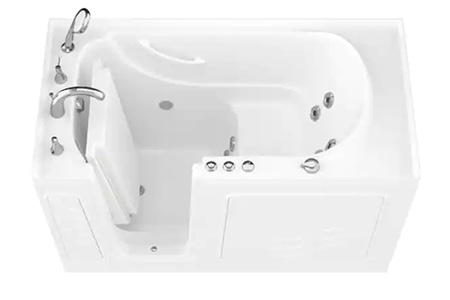
To get into most of the different types of bathtubs, you might need to step over the side. But walk-in bathtubs can easily be stepped into with the help of a door. The door is conveniently built in a way to seal water inside the tub.
Walk-in types of baths are usually made for physically challenged or aged people, who might have trouble getting into standard doors. For extra convenience, walk-in bathtubs even have a seat to sit in.
Drop-in Bathtub
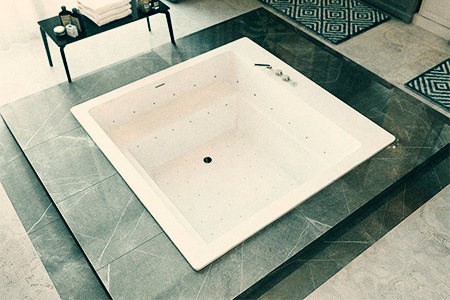
Drop-in tubs are similar to walk-in tubs, wherein you can simply step into the tub, without having to climb over the side of the tub. The main difference is that the rim of drop-in tubs usually lies at or just above floor level.
Drop-in bathtubs can also be fitted with an overhead shower to optimize space. Based on the structure, they can be fitted at the center of the bathroom, for a luxurious, spa-like look and feel and can even be covered with types of tile to make it look more integrated.
Whirlpool Tub
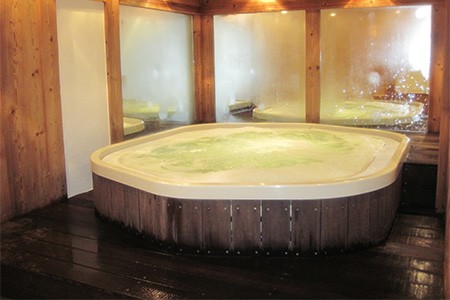
Whirlpool tubs are bathtub styles that have jets fitted in them. These jets regularly shoot water into the tub in a circular motion. The continuous water jets can provide a massaging effect on your body.
Though a lot more expensive than regular tubs, whirlpool tubs are undoubtedly the best types of tubs to unwind in, after a long, tiring day.
Whirlpool tubs require high maintenance as the water is continuously recycled from the tub to the jets. You will still drain it to your types of septic systems since you're bathing, but regardless a whirlpool tub is a real treat.
Air Bathtub
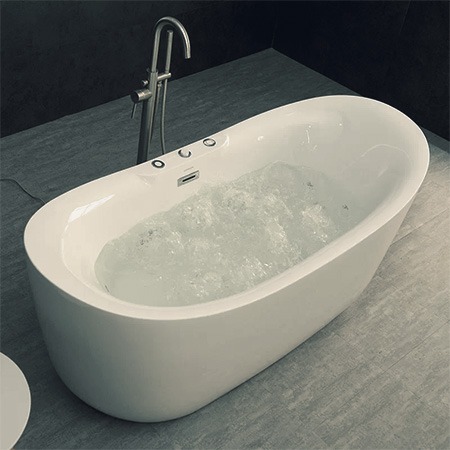
Similar to a whirlpool tub, an air bathtub also comes with jets fitted in it. But these jets shoot air instead of water, releasing millions of tiny air bubbles into the water.
The release of air bubbles also provides a massaging effect on the body. Air bathtubs require a lot less maintenance than whirlpool tubs.
It can even take any kind of bath product such as bath oils, bath salts, etc. that can’t be used in a whirlpool tub.
Types of Bathtubs Based on Size
Based on their size, bathtub styles can be categorized as standard, soaking and walk-in.
Standard bathtubs are usually 60 inches long, with a width of 30-32 inches and a depth of 15-18 inches.
Soaking bathtubs can be up to 90 inches long, up to 72 inches wide and up to 24 inches deep.
Walk-in bathtubs are usually smaller, but with a depth of up to 36 inches, to accommodate a built-in seat.
Types of Bathtubs for Every Bather
A nice, hot bath can be very relaxing. But with the super-fast lifestyles these days, all we’ve got time for is a swift shower before we get on with the day.
Yet, people still aspire for the luxury of a bathtub and have at least one bathroom with a bathtub in their homes. Choose the right but different types of bathtubs and you can bask in the joy of some relaxing baths for decades to come.



